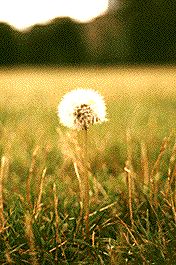Evolutionary biogeography - How does a species spread from region to region?

Dispersal
A species' range will be changed if the members of the species move in space, a process called dispersal. Individual animals and plants move, actively and passively, through space both in order to seek out unoccupied areas and in response to environmental change. (Plants move passively, at the seed stage. This dandelion opposite can send its seeds over a distance of several miles.) If a species originated in one area and subsequently dispersed to fill out its existing distribution. The place where it originated is called its center of origin.
Various dispersal routes might have been followed in the biogeographic history of a species.
• Corridors
Two places are joined by a corridor if they are part of the same land mass: Georgia and Texas, for example. Animals can move easily along a corridor and any two place joined by a corridor will have a high degree of faunal similarity.
• Filter bridges
A filter bridge is a more selective connexion between two places, and only some kinds of animals will manage to pass over it. For instance, when the Bering Strait was above water, mammals moved from North America to Asia and vice versa, but no South American mammals moved to Asia and no Asian species moved to South America. The reason is presumably that the land bridges at Alaska and Panama were so far apart, so narrow, and so different in ecology that no species managed to disperse across them.
• Sweepstakes
Finally, sweepstakes routes are hazardous or accidental dispersal mechanisms by which animals move from place to place. The standard examples are island hopping and natural rafts. Many land vertebrates live in the Caribbean Islands, and (if their biogeography is correctly explained by dispersal) they might have moved from one island to other, perhaps being carried on a log or some other sort of raft.
| Next |



